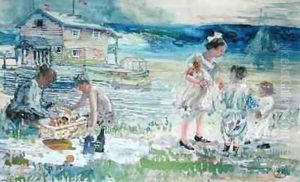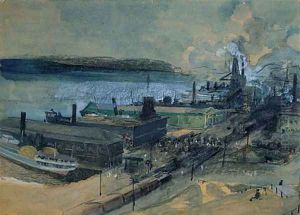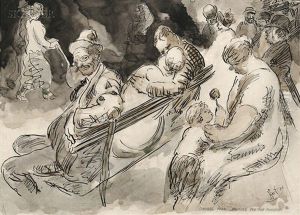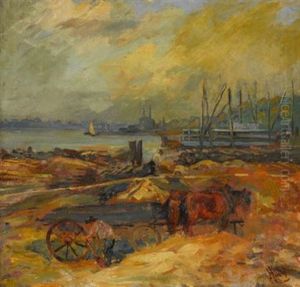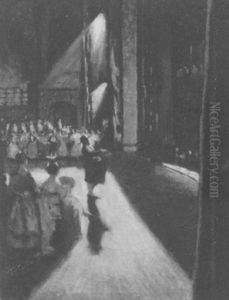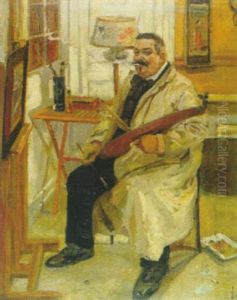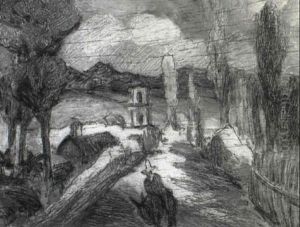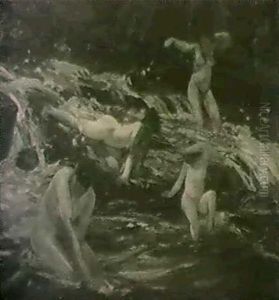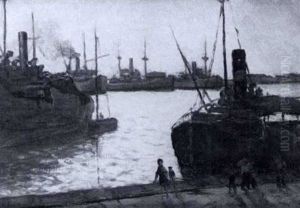George Overbury Hart Paintings
George Overbury "Pop" Hart was an American artist renowned for his watercolors, etchings, and lithographs that captured the essence of his extensive travels. Born in Cairo, Illinois, in 1868, Hart's artistic journey was marked by a profound curiosity about the world and a desire to document its diverse cultures, landscapes, and everyday life.
Hart did not follow a conventional path in his early years; he was largely self-taught, honing his skills through practice and observation rather than formal education. This approach allowed him a unique freedom in his work, which often eschewed the academic for a more direct, experiential representation of his subjects. He was known to travel extensively, with trips throughout North and South America, Europe, North Africa, and the Caribbean. These journeys were not only geographical but also explorations of the human condition, with Hart capturing scenes of public life with a keen eye for detail and a compassionate portrayal of his subjects.
His work was widely appreciated during his lifetime, with Hart being a member of various artistic societies and his pieces being exhibited in prestigious venues. His travels and the vast array of subjects he encountered provided him with endless inspiration, resulting in a prolific output that was both varied and insightful. Hart's ability to convey the atmosphere of a place, the character of its people, and the transient beauty of everyday moments made his work resonate with many.
Despite his travels, Hart maintained connections with the American art scene, contributing to its development through his innovative techniques and approach to subject matter. His work is characterized by a vibrant use of color, dynamic compositions, and a sense of immediacy that draws the viewer into the scene being depicted. Hart passed away in 1933, leaving behind a rich legacy of work that continues to be celebrated for its vitality, diversity, and humanism. His artistic achievements provide a window into the world as it was in the late 19th and early 20th centuries, offering insights not only into the places he visited but also into the era's social and cultural dynamics.
